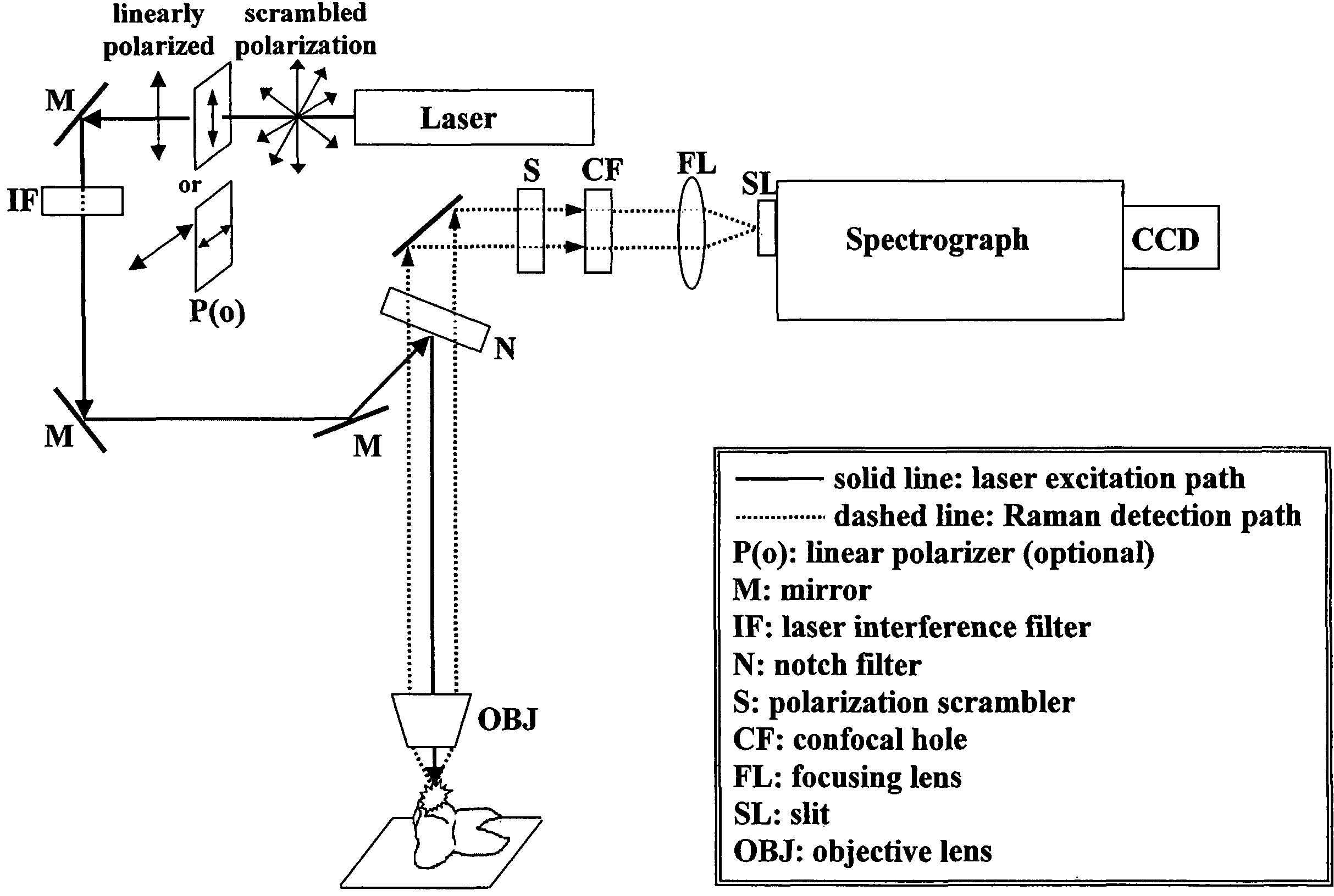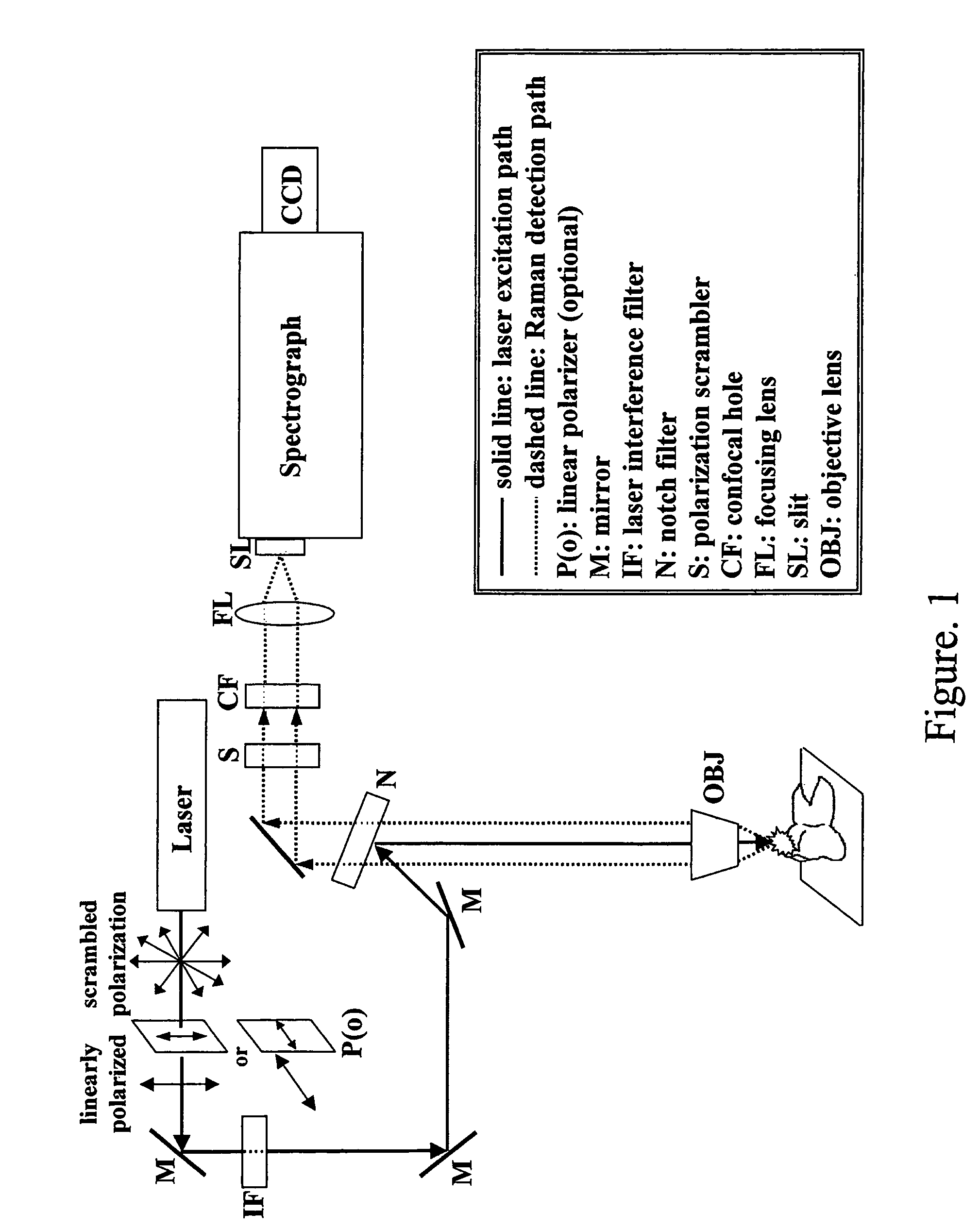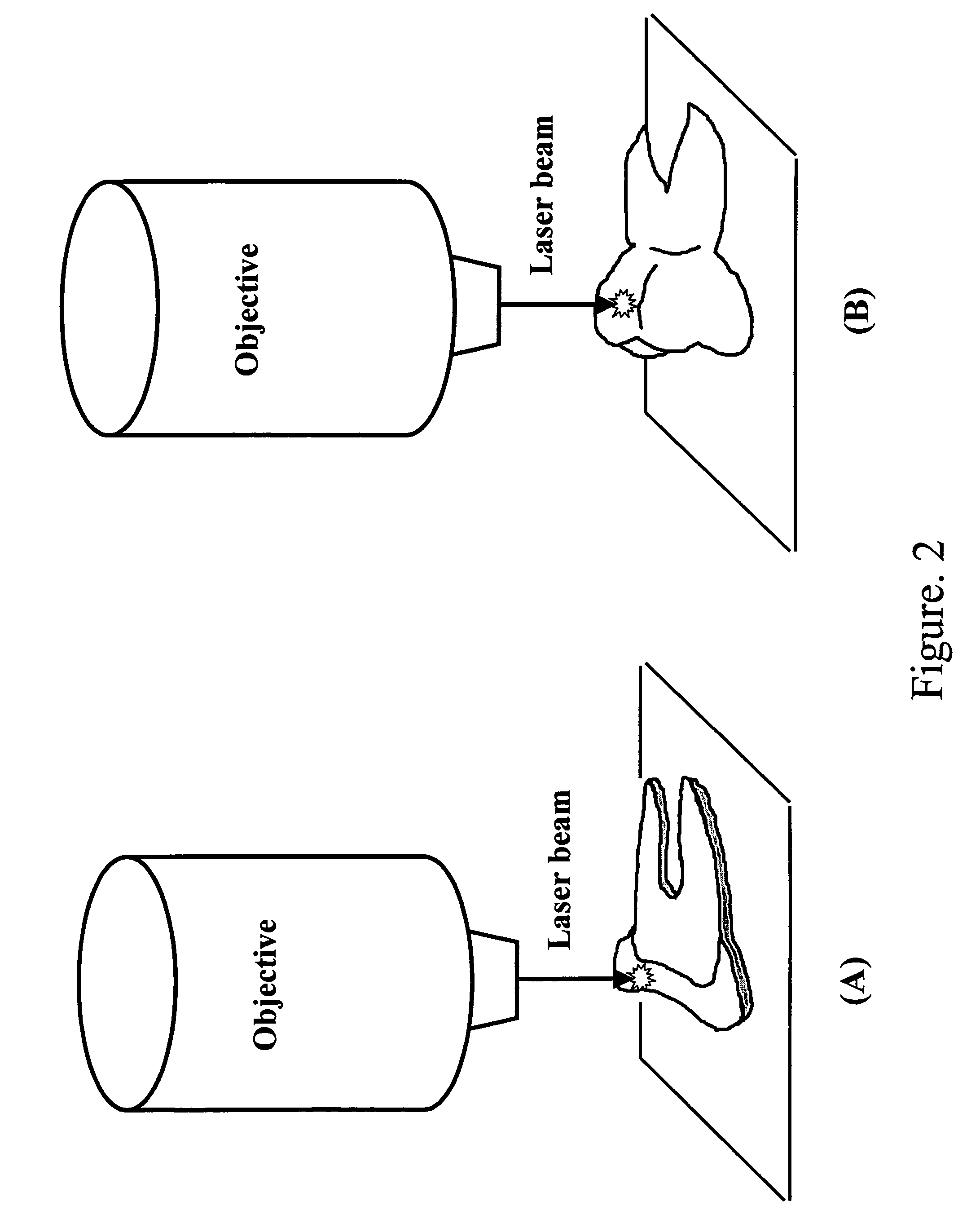Detection and monitoring of changes in mineralized tissues or calcified deposits by optical coherence tomography and Raman spectroscopy
a technology of which is applied in the field of detection and monitoring of changes in mineralized tissues or calcified deposits by optical coherence tomography and raman spectroscopy, can solve the problems of affecting the prevalence of dental caries in western countries, and affecting the normal function of these tissues. , to achieve the effect of improving sensitivity and specificity
- Summary
- Abstract
- Description
- Claims
- Application Information
AI Technical Summary
Benefits of technology
Problems solved by technology
Method used
Image
Examples
Embodiment Construction
[0133]Human molars and premolars (n=15) were collected from orthodontic patients at the Dental Clinic of the Faculty of Dentistry, University of Manitoba. Approvals from the human ethics committees of the Institute for Biodiagnostics (National Research Council Canada), University of Manitoba and Dalhousie University were obtained prior to sample collection. All teeth were examined in patients before extraction and no discoloration of the marginal ridge was observed. Remaining soft tissue on extracted teeth was removed by scaling and the samples were thoroughly rinsed with water. Teeth were preserved in sterile filtered de-ionized water until measurement. Each tooth sample was radiographed and independently re-assessed ex vivo by two clinical investigators at the University of Manitoba and Dalhousie University, respectively. Control caries-free teeth had no visible decalcification or demineralization. Incipient carious teeth included regions of decalcification with intact surfaces an...
PUM
| Property | Measurement | Unit |
|---|---|---|
| wavelength | aaaaa | aaaaa |
| excitation wavelengths | aaaaa | aaaaa |
| porosity | aaaaa | aaaaa |
Abstract
Description
Claims
Application Information
 Login to View More
Login to View More - R&D
- Intellectual Property
- Life Sciences
- Materials
- Tech Scout
- Unparalleled Data Quality
- Higher Quality Content
- 60% Fewer Hallucinations
Browse by: Latest US Patents, China's latest patents, Technical Efficacy Thesaurus, Application Domain, Technology Topic, Popular Technical Reports.
© 2025 PatSnap. All rights reserved.Legal|Privacy policy|Modern Slavery Act Transparency Statement|Sitemap|About US| Contact US: help@patsnap.com



